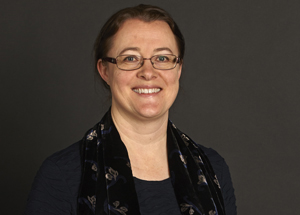Onshore power connection for vessels
A large part of the regular ferry services to and from Ports of Stockholm connect to onshore power. Ports of Stockholm is working together with energy providers, other ports, and shipping customers for further expansion of the infrastructure.
Onshore power connections at Ports of Stockholm
Port of Stockholm |
|||
| Stadsgården, quay 160 | 11/6.6 kV | 50/60 Hz | Cruise ships |
| Stadsgården, quay 167 | 11/6.6 kV | 50/60 Hz | Cruise ships |
| Masthamnen, quay 163 | 400 V | 50 Hz | Ferries |
| Masthamnen, quay 164 | 400 V | 50 Hz | Ferries |
| Frihamnen, quay 625 | 690 V | 50 Hz | Ferries |
| Värtahamnen, quay 511 | 11 kV | 50 Hz | Prepared for cruise ships |
| Värtahamnen, quay 512 | 11 kV | 50 Hz | Prepared for ferries |
| Värtahamnen, quay 513 | 11 kV | 50 Hz | Ferries |
| Värtahamnen, quay 514 | 11 kV | 50 Hz | Ferries |
| Värtahamnen, quay 515 | 11 kV | 50 Hz | Prepared for ferries |
| Skeppsbron | 400 V | 50 Hz | Archipelago ferries |
| Strömkajen | 400 V | 50 Hz | Archipelago ferries |
| Nybrokajen | 400 V | 50 Hz | Archipelago ferries |
| Other inner city quays | 400 V | 50 Hz | Yachts, warships |
Port of Kapellskär |
|||
| Quay 2 | 11 kV | 50 Hz | Ferries |
Port of Nynäshamn |
|||
| Quay 1 | 11 kV | 50 Hz | Ferries |
| Quay 2 | 11 kV | 60 Hz | Ferries |
Stockholm Norvik Port |
|||
| Quay | 11 kV | 50 Hz | Prepared for container ships |
| Quay | 11 kV | 50 Hz | Prepared for container ships |
| Quay | 11 kV | 50/60 Hz | Prepared for ferries |
Ferry services are connected to onshore power
At Port of Stockholm, Viking Line and Tallink Silja vessels are connected to onshore power. At Port of Nynäshamn Polferries and Destination Gotland vessels are connected. At Port of Kapellskär Finnline's ferry traffic is connected. The archipelago and charter boat services all connect to electricity at the quayside in Stockholm.
The services already connected to onshore power, or are next in line, are also those where onshore power connection has the greatest impact, as those vessels constitute by far the most frequent traffic. The same vessels operate on routes to and from the same ports. A small number of obvious partners are involved and can jointly agree on one solution and funding.
International cruise ships
Ports of Stockholm has, within the framework of an EU project together with three Baltic Sea ports – Copenhagen/Malmö, Aarhus and Helsinki – invested in land supply with high voltage at two central quays in Stockholm. At least 45 percent of the cruise calls to Ports of Stockholm can now connect to onshore power.
Ports of Stockholm is working from a plan of action to be able to offer more vessels onshore power connection at the quayside. This is a long-term effort, as it requires collaboration and dialogue with the shipping companies and with the other Baltic Sea ports. It also requires a high power output supply and major investment.
Ports of Stockholm’s strategy and environmental discounts
Whenever ports or quays are constructed or refurbished, the strategy of Ports of Stockholm is to install facilities to enable vessels to connect to onshore power at these quay-berths. For example, all of the quay-berths at the Värtahamnen port are enabled for onshore power connection. At Stockholm Norvik Port all quay-berths have onshore power connection capabilities.
For many years Ports of Stockholm has offered environmental discounts to encourage customers to implement environmentally beneficial measures. These incentives focus on reduced emission of air pollutants and reward vessels that have better environmental performance.
Ports of Stockholm’s jurisdiction
Ports of Stockholm is classed as a public port. This means that the port authorities must in principle allow any vessel that wants to use the port to do so. In other words, Ports of Stockholm cannot insist that vessels connect to onshore power.

